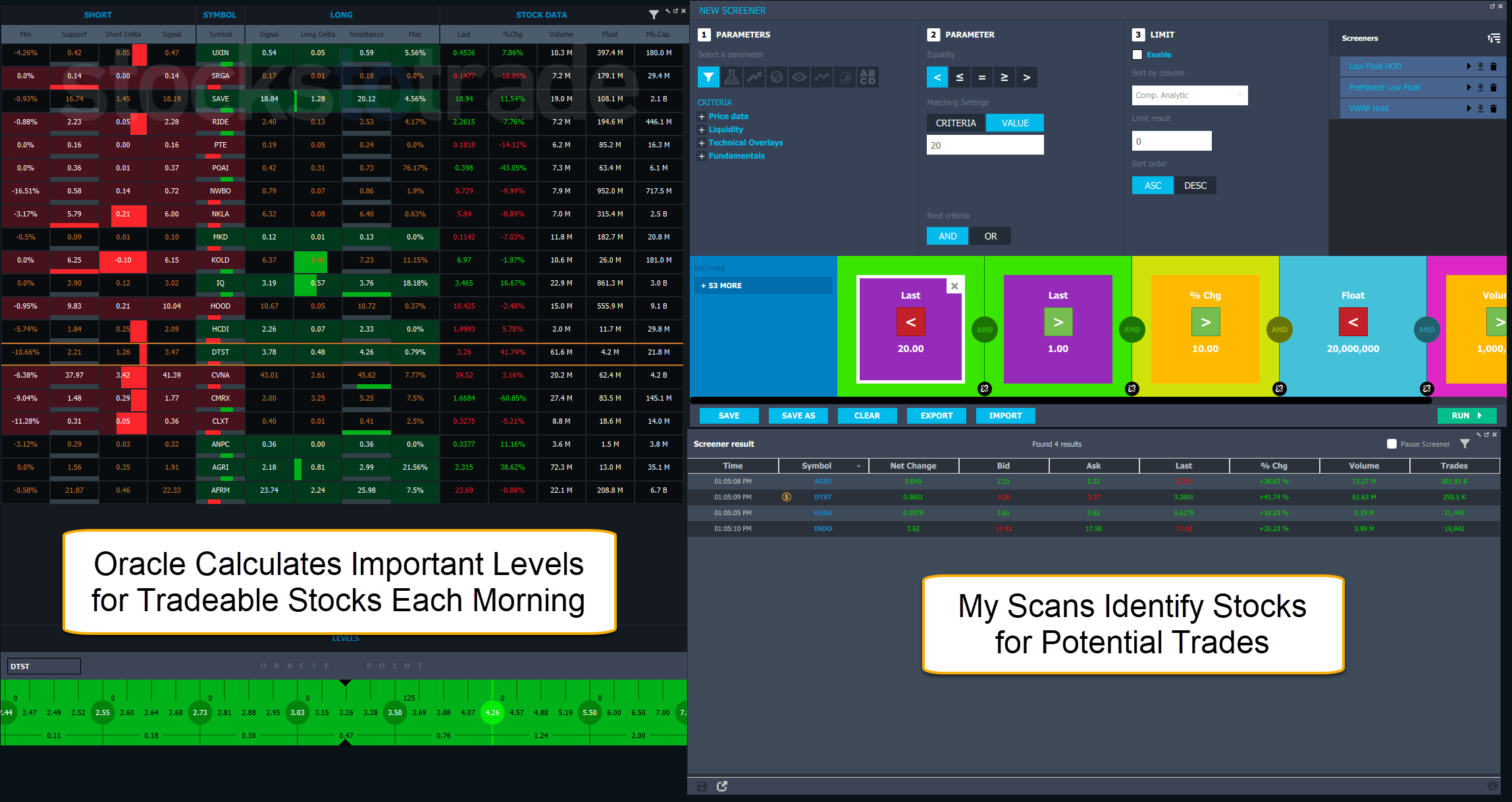Back in the day when I was a rising tennis star, my coaches taught me about the sweet spot on the racket.
Contrary to popular belief, the sweet spot on the racket isn’t where the ball rebounds with maximum velocity…
…and it isn’t the spot where vibration disappears after the ball is struck.
It’s actually the optimal spot that gives the best response for the effort given.
In trading, we call that more bang for your buck.
It’s sort of how stock liquidity works too.
There’s a sweet spot for most trades.
And I want to show you how to find yours.
Because once you discover it, you’ll be able to find higher probability setups and maximize your profit potential.
Liquidity 101
Financial pundits love to throw this term around a lot to make themselves sound smarter.
But it isn’t rocket science.
Liquidity refers to how easily a trader can enter or exit a position.
This comes down to several factors:
- Total shares available to trade (IE Float)
- Volume
- Exchange
When a stock has fewer shares available to trade, it doesn’t take much volume to move the shares. That’s why these are more likely to create runners.
On the flip side, a stock with more shares available to trade tends to chop around more without a clear direction.
That said, if you get enough volume into a stock, even one with a lot of shares available to trade, price will definitely start to move.
So float and volume make sense, but what does the exchange have to do with anything?
On major exchanges like the Nasdaq, AMEX, etc. market makers facilitate trading. They add volume into stocks and make it easier for investors to buy and sell.
OTC markets don’t have market makers. They rely on trades between two parties.
That makes OTC markets inherently more illiquid than the regular exchanges.
Does that make OTC better than the NASDAQ? Not necessarily, and I explain why.
Finding The Sweet Spot
With the way that I trade, I look for stocks with lower floats yet decent liquidity.
That’s why I often trade small caps on the NASDAQ, AMEX, or OTC markets.
When a stock has too much liquidity, you start to get additional players like high-speed traders, scalpers, and others jockeying for position and reducing arbitrage potential.
This tends to create a very choppy stock chart that I often get stopped out of because I focus on cutting my losses quickly.
At the other end of the spectrum, I need enough liquidity to be able to take a big enough position, and trade in and out of the stock.
Think of it this way. I may want to trade a stock that costs $0.50 for a 5% gain to make $500.
That means I need to buy $10,000 worth of stock or 20,000 shares.
That’s fine if a stock trades a few million shares each day. But if it’s only trading 50,000 or even 500,000, it’s going to be incredibly difficult if not impossible to get in and out.
Generally speaking, I like stocks that trade a few million shares per day.
And if I can get one with a float at or below 10 million, all the better.
One way I check this is to use the screener on the StocksToTrade platform to look for stocks with heavy volume and price action in premarket that also have a low float.
This helps me locate the right stocks every day without having to sift through all the stocks gapping up or down every day.
One other thing to watch out for is the bid-ask spread.
The bid is the best price you can sell shares for while the ask is the best price you can buy them for.
I like to see these as close together as possible.
Otherwise, I can lose money even when I get a trade right.
For example, let’s say a stock’s current bid is $0.50 and the ask is $0.55.
That means I’d have to buy the stock at $0.55. Then, in order to make a profit, the stock would have to rise to $0.65 just so I could walk away with $0.05+.
A wide bid-ask spread is also a sign of low liquidity.
The Bottom Line
The amount of liquidity a trader needs is based entirely on the way they trade.
Because I’m conservative and take small losses quickly, I need enough liquidity to trade effectively but not so much that it prevents decent price runs.
Follow some of your favorite stocks for a week or two and see how they react when there are high and low liquidity periods.
You can also get more information on liquidity with my free YouTube video here.
—Tim
The post Use Liquidity To Your Advantage appeared first on Timothy Sykes.
